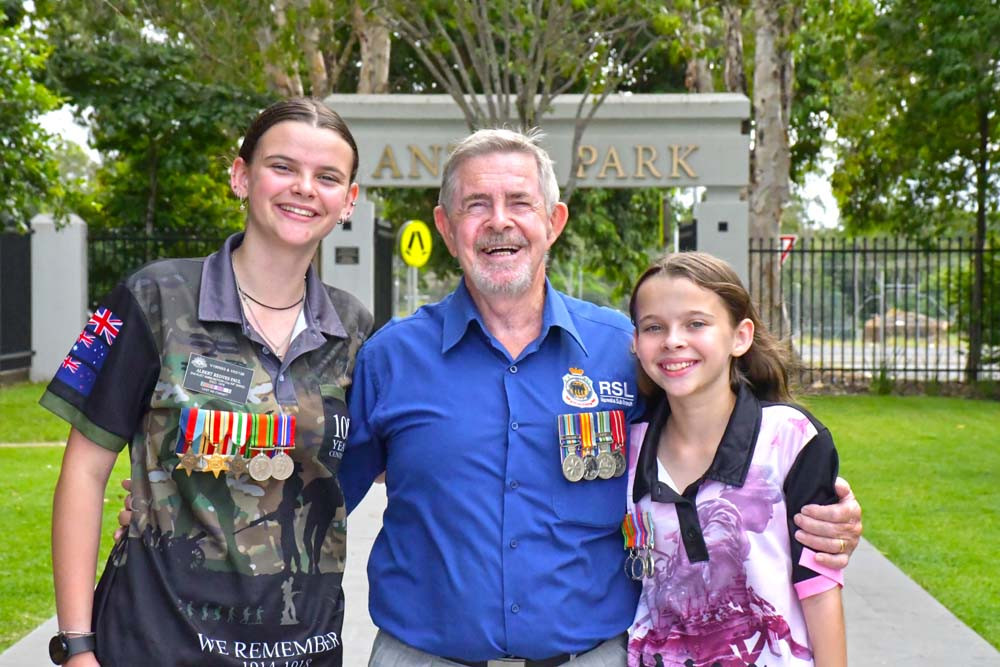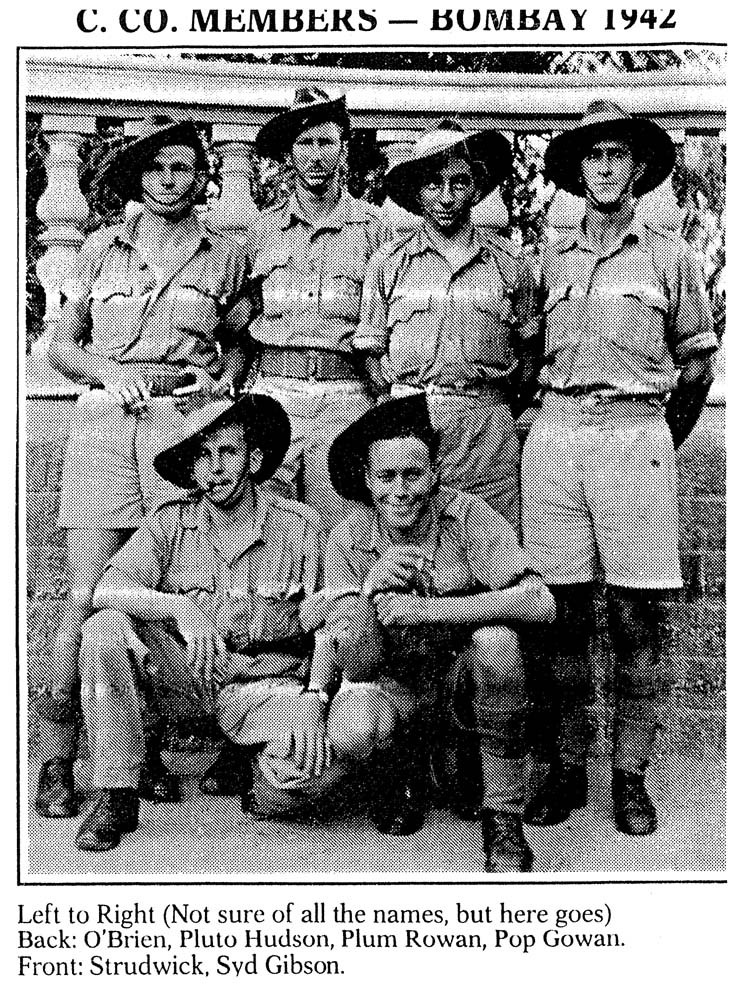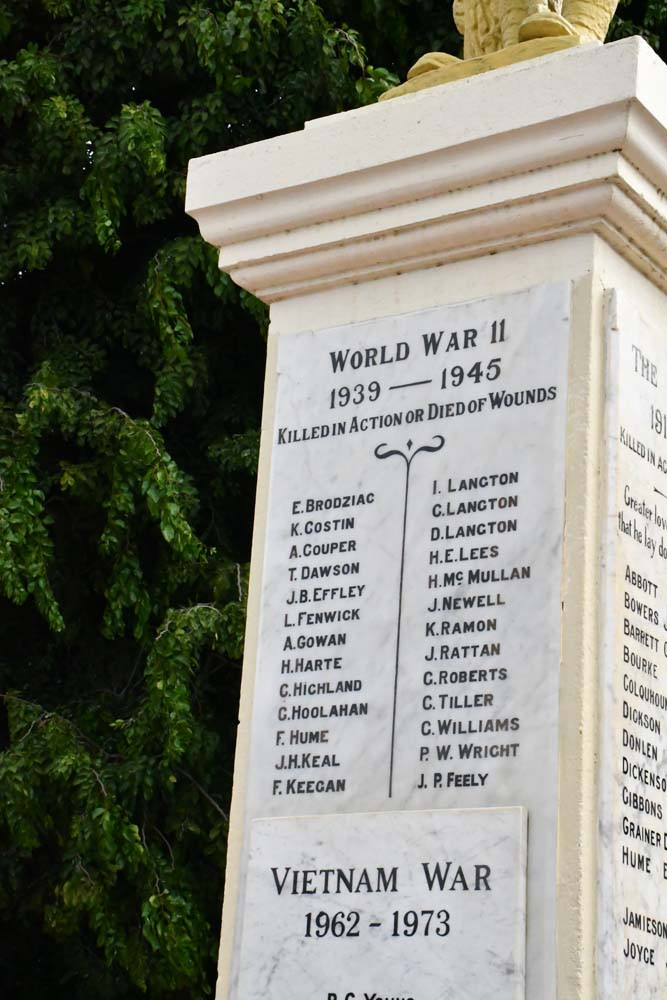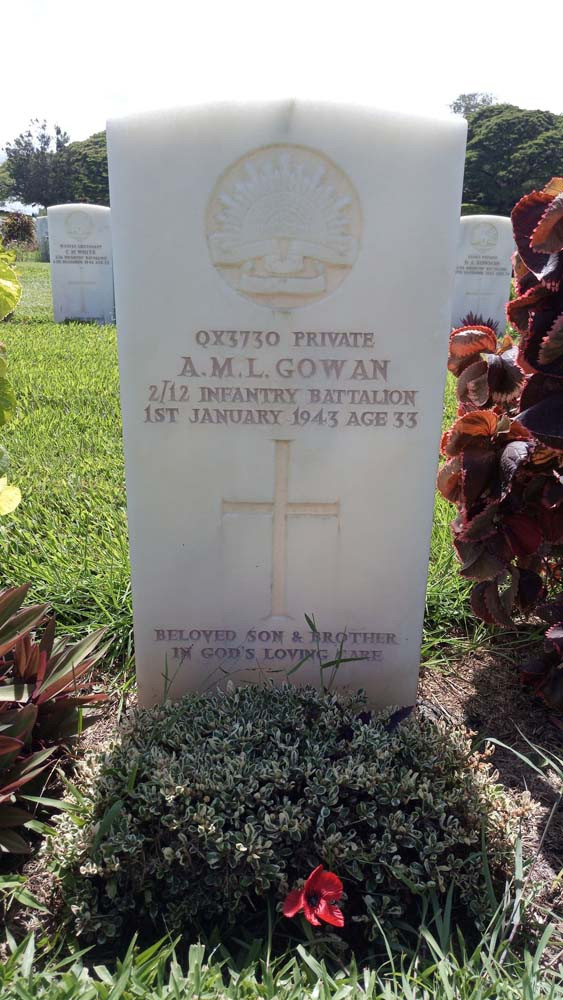Community & Business
23 April, 2024
A day to honour them
Mareeba Vietnam Veteran Jim Ingram will be among thousands of people who will turn out to Anzac ceremonies throughout the region tomorrow to remember the sacrifice of servicemen and women in war. Next to him will be his granddaughters Maddie and Sammie, who are carrying his legacy into the next generation.

Ingram legacy marches on
AS the Last Post echoes through Byrnes Street, Mareeba on Anzac Day, veteran Jim Ingram stands tall and reflects on the sacrifices made and the friends he lost while holding the hands of two young girls.
Those girls are his granddaughters, Maddie and Sammie Ward, who keep their heads as high as Jim’s and honour their grandfathers, great-grandfathers, great-grandmothers, uncles, and aunties who fought for their freedom.
Between 1965 and 1972, Jim served during the Vietnam War in the Royal Australian Navy, mainly conducting escort duties around Vietnam and transporting aircraft across the world.
During his time in the Navy, Jim saw loss, heartbreak and terror and slept and worked in uncomfortable, dangerous and cruel conditions.
“When you look back now, all the ships are long gone and have been replaced with new ships – and most of them are long gone too – your friends are long gone, and it’s all history,” he said.
“That is why Anzac Day is important. Back then, the people who served had it really tough. These ships didn’t have air conditioning, which can be hard when you are working in the tropics.
“It’s all different now, people get looked after and they have wonderful programs and you get leave and welfare of all sorts. When I signed the dotted line, I gave my life to the government ... I slept on a thin mattress in a bunk that felt like a sauna.
“It may sound like an old wives’ tale but we had weevils in the bread and huge cockroaches on the ships – the conditions were pretty bad but we kept going.”
Today, he still carries scars from the war, having trouble with his mobility and his hearing after an accident on the ships.
He struggled to readjust to normal life and, at the time, was frowned upon by the Australian public – he was “just one of them Viet Vets”.
But today, he looks back at his service with pride and continues to honour the memories of those he met and saw die on the front lines.
Jim’s father, mother and uncles and aunties also served during World War II in Scotland, and his wife Irene’s parents also served, carrying a strong military legacy down generations.
Ever since Sammie was four years old, she has marched in the Mareeba Anzac Day ceremony, hand in hand with Jim, wearing the medals of her relatives who served in World War II.
Her and 11-year-old Maddie spent many days and nights at the local RSL, talking to old veterans, hearing their stories and being inspired by their bravery.
Now 16 years old, Sammie marches independently despite many others her age not taking an interest in Anzac Day or war history.
“I have always done it alongside my Pop (Jim), and a lot of people at that age don’t really do it,” she said.
“When I was old enough, I then started to do it on my own, behind him. I march for people like my pop who fought in the war, and I march for those who have passed away during the war.
“I think it is important kids my age or kids in general realise just how much the veterans went through and they need to realise what an important day Anzac Day really is.
“There were millions of people who were injured or wounded like Pop and millions more who were worse – killed.”
Sammie is also following in Jim’s footsteps, taking up work experience with the Royal Australian Navy, with plans to enlist when she turns 18.
When she marches, Maddie said she felt proud, especially to do it alongside Jim and Sammie.
“It is a day for the people who served their country and sacrificed themselves,” she said.
“When I march, I feel proud but also a little sad when I think about the soldiers like Pop and his parents, but I do enjoy marching with Pop and Sammie.”
Having grandchildren who honour the Anzac spirit and march every year brings great pride to Jim, and he hopes that Sammie and Maddie can inspire their friends and peers to do the same.
He said Anzac Day had to remain an important date on the Australian calendar, or else all the sacrifice, hardship, struggle and bravery would be for nothing.
“You need to keep it in the public eye and I just know if there was a war to happen today, everyone would have to be in it and it was a wake up call,” he said.
“Just think, if it wasn’t for the World War veterans, the world would look very different ... we need to recognise them and never forget what they did for this country.”
This year, Jim, Sammie and Maddie will be commemorating Anzac Day at the Sunshine Coast alongside other family members. – Lest We Forget

WHEN Arthur Gowan headed from Mareeba to Cairns to enlist in the army in November 1939, he was well aware he was putting his life on the line for his country.
Sadly, Arthur, or “Pop” as he was known to his army mates, died just four years later in a battle in Papua New Guinea during which 62 other soldiers in his battalion were also killed.
His sacrifice is remembered every Anzac Day by his great nephew James Gowan who attends the Mareeba ceremony to ensure his relatives’ and other soldiers’ service will never be forgotten.
James is passionate about keeping the stories of diggers alive, suggesting to a young class of kids at a Tolga school one year that, in lieu of having a relative to remember on that day, they could each “adopt” a veteran, research their story, and remember them every year.
“I go to Anzac Day services every year to make sure that we don’t forget the sacrifices those blokes made and to keep their stories alive, and that’s what I wanted the kids to think about,” he said.
Arthur Max Lisle Gowan came to Mareeba in 1931 after he and his brother, John (Denny) emigrated to Australia from Cheshire, England, living first in Holbrook, New South Wales, before heading north.
John was a veteran of World War 1, so was given a “Soldier Settler” block at Malone Road, Emerald Creek, where the two brothers grew tobacco and cotton through the depression years. But they struggled to make money with tobacco in the early 30s due to unfavourable seasons and low prices.
With the declaration of war in September 1939, it didn’t take long for 30-year-old Arthur to head off to Cairns to enlist on 3 November.
“He was older than a lot of the men at the time – most were early 20s – so they called him ‘Pop’,” James said.
From there, he was sent to Redbank for training and was posted to the 2/12th Battalion which was made up of Far North Queenslanders and Tasmanians. It wasn’t long before the newly enlisted Private Gowan was deployed to Salisbury Plains, England, in May 1940 to defend against a possible German invasion.
In 1941, the Battalion was then transported to Syria and, later, Tobruk where Arthur became one of 14,000 soldiers who took part in the Siege of Tobruk. Servicemen who were involved became famously known as “Rats of Tobruk”.
With the outbreak of hostilities with Japan and the fall of Singapore, the 2/12th Battalion was then recalled back to Australia in 1942 to undertake further jungle warfare training at Kilcoy before being deployed to Milne Bay, New Guinea.
There, the 2/12th fought in the battles of Milne Bay, Good Enough Island and Giropa Point, part of the Buna/Gona Campaign.
It was at the battle of Giropa Point on 1 January 1943 that Arthur was fatally shot and killed while forming up to move through a coconut plantation supported by tanks of the 2/4th Armoured Regiment.
He was just 33 years old at the time of his death and was one of 63 soldiers killed on that day and 122 wounded. It was the highest number of casualties the 2/12th would suffer in a single day for the entire war.
“Thirty years ago, I wrote to the Battalion Association and got a reply letter from the soldier who was next to him in New Guinea when he was shot,” James said.
“As they headed through the plantation, they took cover in a drain but when he stood up, he was shot in the chest and died immediately.”
Arthur was buried on the battlefield the next day and after a further burial at Cape Endaiadere, his body was later exhumed and buried at Bomana War Cemetery, Port Morseby, Section B6, Row B, Grave 12.
Arthur’s name is one of many listed on the Mareeba Cenotaph, although it had to be changed some years ago when it was discovered it was spelled incorrectly.
Gowan Street in the Mareeba Industrial Estate was named in his honour.
The Gowan family were no stranger to war, with James’ grandfather, John, enlisting in 1917 at only 17 years of age.
He served on the Western Front as part of the 4th Battalion in the north of France, returning to Australia in 1919 after the war ended.
James has also served in the Army as a reservist for 20 years, and some years ago, travelled to France with his son and father to stand on the battlefields that his grandfather fought on.





